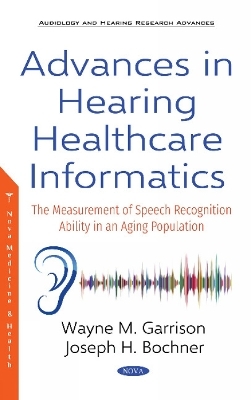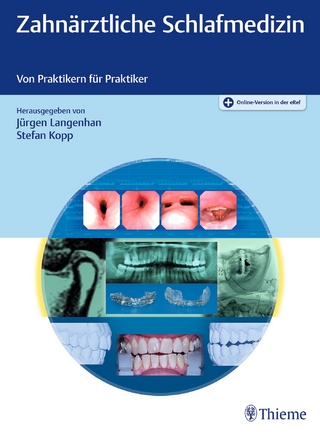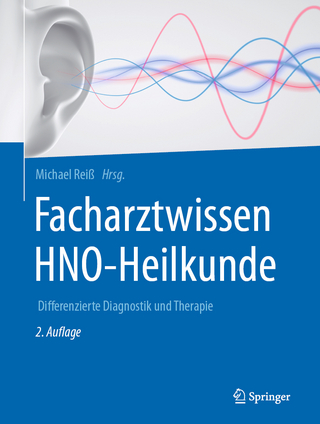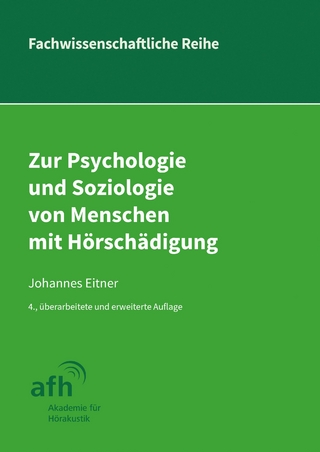
Advances in Hearing Healthcare Informatics
The Measurement of Speech Recognition Ability in an Aging Population
Seiten
2018
Nova Science Publishers Inc (Verlag)
978-1-5361-4361-4 (ISBN)
Nova Science Publishers Inc (Verlag)
978-1-5361-4361-4 (ISBN)
In the United States, it is estimated that 48 million individuals suffer from some level of hearing loss. Of this number, a staggering 80% who could benefit from hearing aids do not use them. Fewer than 30% of adults aged 70+ years who could benefit from hearing aids actually use them. Reasons vary, but affordability and accessibility are major barriers to the intervention and treatment of hearing loss. Whereas the hearing healthcare needs of an increasing number of Americans have not been met by current market models, the Over the Counter (OTC) Hearing Aid Act was introduced in March of 2017 by Senators Elizabeth Warren and Chuck Grassley. On 18 August 2017, President Donald Trump signed into law the Food and Drug Administration (FDA) Reauthorization Act of 2017, legislation that includes the OTC Hearing Aid Act, designed to enable adults with perceived mild-to-moderate hearing loss to access OTC hearing aids directly, without the need to be seen by a hearing healthcare professional. The new legislation carries with it the requirement that the FDA create and regulate a new category of OTC hearing aids that meets the same high standards for safety and consumer protection applied to other medical devices. However, the legislation is vague (ie: perceived hearing loss) on the evaluative component that is required to guide the consumer in the purchase of an OTC hearing aid. Automated technologies for hearing screening in adults currently exist, many involving the use of pure-tones. However, without a way to control the sound level and the users selection of a transducer (earphones or speakers), the delivery of hearing screening tests that use pure-tones over the internet and on mobile devices has proven to be very problematic. An automated hearing screening procedure using speech-based materials is shown in this work to provide a desirable alternative to testing conducted outside the clinical setting. This publication details the development of a hearing screening application that is: (1) Self-administering; (2) can be taken in the privacy of ones home; (3) short in duration; and (4) freely available for use. The application is shown to serve as a proxy for pure-tone hearing screening methods, using the criteria established by the American Speech-Language-Hearing Association (ASHA). A variety of reports are provided following an interactive testing session. The application includes a training component intended to acclimate new users to hearing aid function. It also enables consumers to measure the personal benefits afforded (or not) by the purchase of a hearing aid.
For more information, please visit our website at:Print: https://www.novapublishers.com/catalog/product_info.php?products_id=65502E-Book: https://www.novapublishers.com/catalog/product_info.php?products_id=65503
| Erscheinungsdatum | 21.12.2018 |
|---|---|
| Verlagsort | New York |
| Sprache | englisch |
| Maße | 155 x 230 mm |
| Gewicht | 428 g |
| Themenwelt | Medizin / Pharmazie ► Medizinische Fachgebiete ► HNO-Heilkunde |
| ISBN-10 | 1-5361-4361-8 / 1536143618 |
| ISBN-13 | 978-1-5361-4361-4 / 9781536143614 |
| Zustand | Neuware |
| Haben Sie eine Frage zum Produkt? |
Mehr entdecken
aus dem Bereich
aus dem Bereich
ein Kompendium von Praktikern für Praktiker
Buch (2023)
Thieme (Verlag)
330,00 €
Differenzierte Diagnostik und Therapie
Buch | Hardcover (2021)
Springer (Verlag)
179,99 €
Buch | Softcover (2022)
Median-Verlag von Killisch-Horn GmbH
53,00 €


